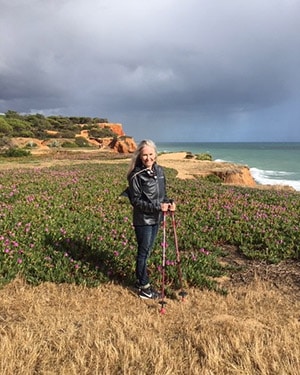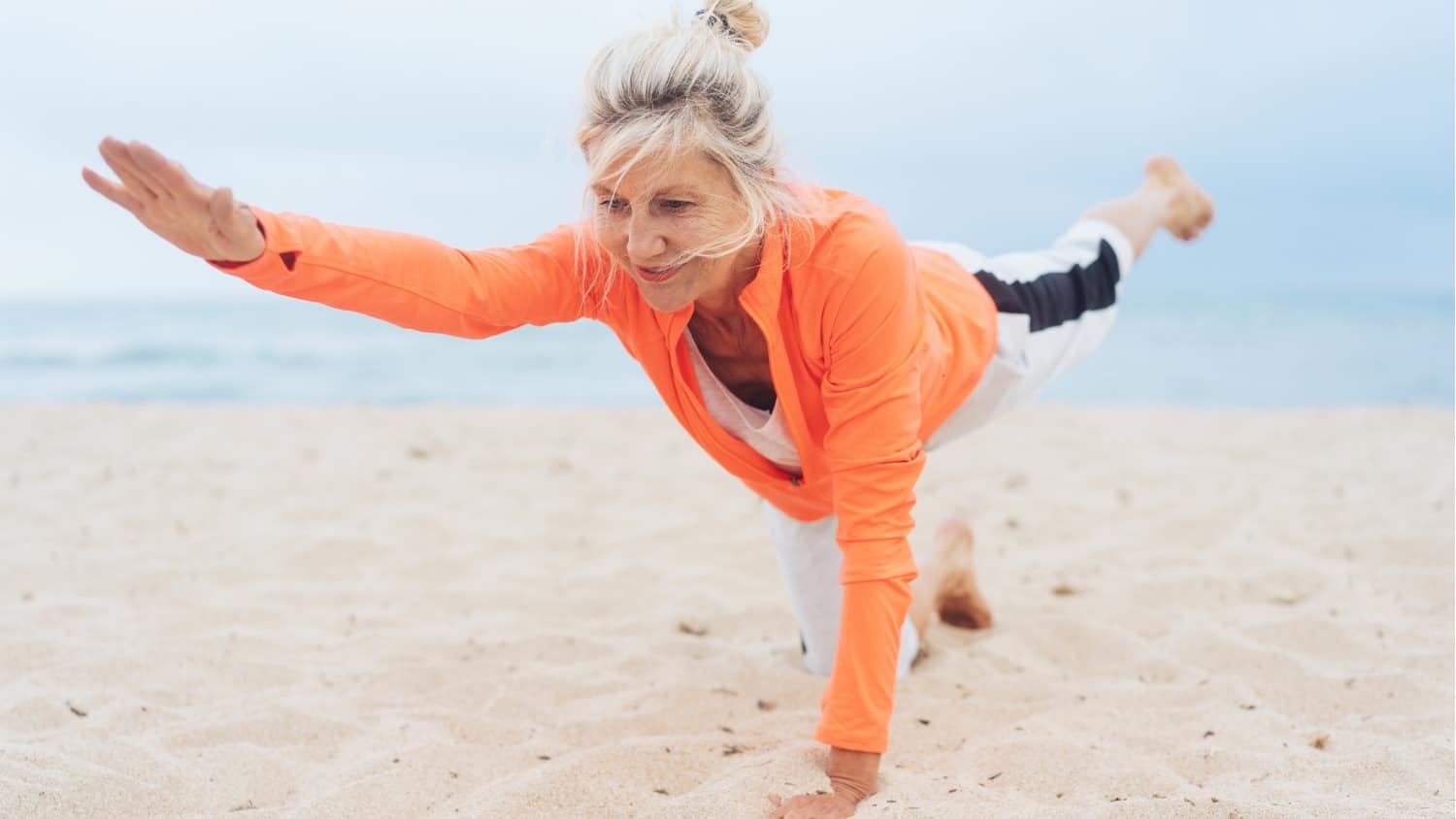
Why Nordic Walking Is a Wonderful Activity at 60 and Beyond
Nordic Walking is walking with poles. It was invented in Norway when cross country skiers wanted to train in the off-season. And it took off.
Now it is not uncommon, especially in upscale urban areas in Canada, to see avid “polers” – solo or in groups. To me, they all look happy and on-fire. Many of them are in our demographic. Believe me, they are on to something.
But why is Nordic walking perfect for those over 60?
Researched Benefits of Nordic Walking for Those 60-Plus
Why should you start using walking poles? The researched benefits of Nordic walking, specifically for our demographic, are incredible:
- improved core strength,
- decreased pain in the neck, back and shoulders,
- improved mood,
- decrease in fatigue levels,
- improved exercise tolerance,
- reduced impact on the knee joints,
- improved stability,
- improved posture, and
- increased amount of calories burned by 15% compared to walking.
Now, I happen to believe that many of these benefits are combined with the benefits of simply being outside. When I first discovered walking with poles two years ago, I was amazed at how wonderful that activity felt, and the many added advantages in my setting.
Now I Travel with My Poles
I have Systemic Lupus with Rheumatoid Arthritis. This means that some days I have very little energy and can lose my balance. Overall joint and muscle pains come and go.

I use walking poles designed for rehabilitation. This year I decided to treat them as any other assistive device and walked right up to Airport Security with them.
No one batted an eye. In fact, they asked me if I would be ok to walk through the Security scanner. Now my walking poles go with me everywhere. They are my friends – always providing needed support. I used them every day for six weeks in Europe and came home healthier and thinner.
These poles help me to get in the green space outside more often and for longer periods of time – which, scientific research says, provides loads of health benefits.
How Is Nordic Walking Done?
To walk with Nordic poles, you don’t need to do anything special at all. Just walk as usual and only use your arms. Do what comes naturally.
Move opposite arm and leg. Step forward with the poles in the same way that you walk. Your right leg and your left arm move together, then your left leg and right arm. Don’t think about it too much.
Lift and plant your poles to the same distance as your forward foot. Keep your spine erect, eyes forward, chin tucked in and shoulders relaxed. Do not grip the pole handle too tightly.
I find it’s good advice to practice inside first. If you like, use music and a marching beat. Look in the mirror. Have someone take a video of you before and after. Notice how much taller you can stand with the poles. Notice your posture. And finally, have fun!
Who Is Doing This Kind of Research?
The lead researcher for the study I mentioned above is Professor Bullo in the Sport and Medicine Division, Department of Medicine, University of Padova, Italy. On his team is Professor Di Bocalini in the Department of Medicine and Aging Studies, University of Chieti-Pescara, Chieti Scalo, Italy.
There is also a larger study in the Journal of Rejuvenation Research which synthesizes previous studies.
How They Did It
For the purpose of this study, the research team selected only the results of studies published in peer reviewed journals. They also narrowed the age range of participants from 60–92 years old.

The Results
When comparing Nordic Walking with its ordinary alternative, the researchers found that the Nordic walkers showed increase in: “dynamic balance, flexibility of the lower body, and improved quality of life.”
How to Get Started
You may find that there are rural and urban poling walking groups in your area. Check them out. Start visualizing yourself as one of them. You will be on to their secret. And the support of poles is a wonderful way to stay outside longer. Think of the combined benefits!
Let’s Have a Conversation:
What do you know about Nordic Walking? Have you used walking poles before? What was the experience like? Please share with our community!
Tags Fitness Over 60







Nordic walking is prescribed for people with lymphodema (as I have) because the arm movements increase the movement of lymph and reduce swelling.
I need to stop worrying about the looks I’ll get in my own neighbourhood, as I’ve never seen anyone around my area doing it.
I’d be a group of one.
I see people of all ages walking with poles in Switzerland. I live a few minutes from the Rhein and there is a promenade with a stream running down to the Rhein through a park opposite my apartment. It looks like great exercise and I’m considering taking it up as I have a problem with one knee, it’s painful ascending stairs.
What I frequently notice is even very old people in Switzerland will use poles to aid walking, yet when I return home to Britain for a visit people are only too happy to ride on motability scooters (and some are not that old!) In all of my 7 years in Switzerland I have seen 2 people on scooters and they were very disabled so needed them.
As a British Nordic Walking Instructor, I would like to add that Nordic Walking was invented in Finland not Norway. Also, it requires a specific technique so I would advise having a few lessons before buying poles so you can see how to use them first, then decide which model of poles is best for you.
What are the best poles to purchase? Where? How do you size them? I’m very short. What are they made out of? Are they heavy?
When Nordic walking became popular in Britain a number of years ago, the advice was to be measured for the length of pole you would need. A lot of walking poles on the market can be adjusted for length. In both my home town in Scotland and at my home city in Switzerland, there are groups for Nordic walking. Perhaps you could research whether there is one in or near your area to join.
I have normal walking poles (the type used out hiking) which were an inexpensive special buy from ALDI, the German supermarket chain.
Nordic Walking poles are different to hiking poles and are attached to a ‘glove’ rather than a wrist strap. This allows greater push without using the fingers or wrist.